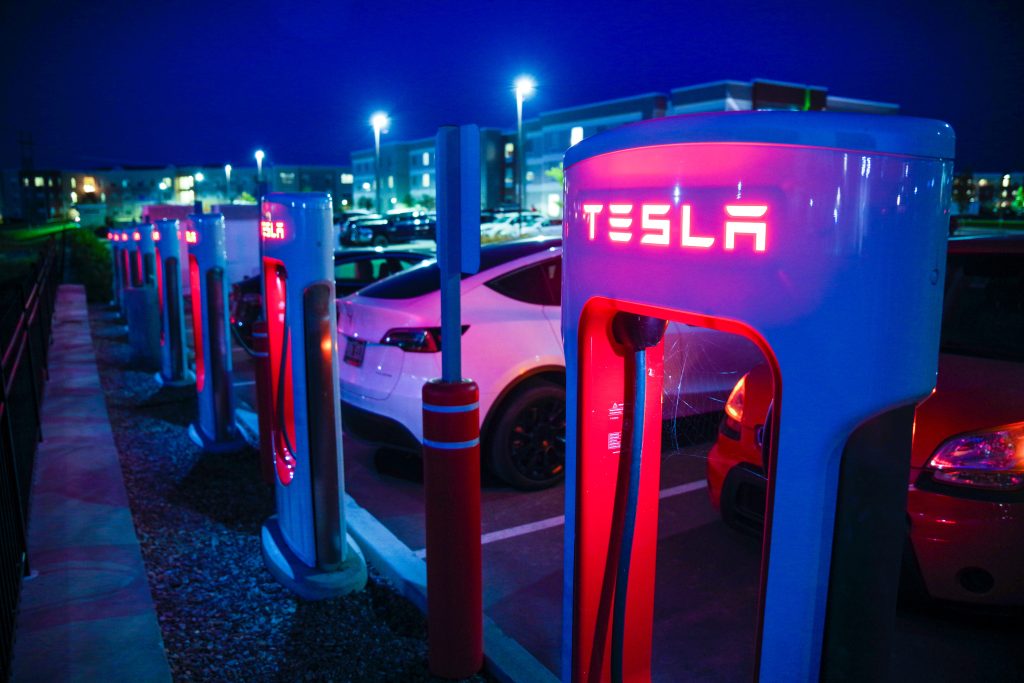By: Otaiba Ahsan

As electric vehicles (EVs) continue to grow in popularity, it’s important for consumers to become educated on battery technology. Numerous analyses show that the longer you own an EV, the more value you’re getting out of the car in terms of the overall cost of ownership. In other words, the more money you’ll save since you don’t need to get oil changes, pay for gas, or get other maintenance as frequently, like brake replacements. One of the best ways to prolong the life of your EV is to take care of its battery to avoid faster degradation. Charging habits are key when looking at battery health. Should you charge your Tesla battery to 100% every day? Continue reading for details on how you should be charging your car.
Types of Battery Packs in a Tesla
Tesla ships their cars with either Lithium Iron Phosphate (LFP) or Lithium-Ion battery packs. The key difference for you and me is that LFP batteries can be charged to 100% each day, whereas lithium-ion batteries are recommended to be set to between 80% and 90% to avoid faster degradation of your battery. When batteries degrade enough, there’s a chance it’ll require a replacement from Tesla if it’s outside of their warranty, which can be quite costly.
As mentioned, if your car has an LFP battery pack then you really don’t have to worry about charging limits! To determine if your Tesla has one, navigate to Controls > Software > Additional Vehicle Information using the touchscreen in your car. Next, if your car has an LFP battery, it’ll display: “High Voltage Battery type: Lithium Iron Phosphate.” Consequently, if your car doesn’t have a lithium-ion battery pack then it’ll just say “High Voltage Battery” and nothing else.
What Should You Charge Your Lithium-Ion Battery Pack to?
Why should we not charge our lithium-ion battery packs to 100% every time? Without getting into the details, the key thing to note is that your battery will degrade faster and lose capacity if you consistently charge past 90%. That’s why charging to between 80-90% is recommended. While it’s harmful to consistently charge to 100%, it’s completely fine to do on occasion. If I know the next day I have a lot of driving to do or I’m about to embark on a road trip, then I’ll always charge to 100% to get the most range.
If your battery loses capacity due to overcharging, then it’ll hurt your car’s overall range more quickly than its natural degradation schedule. As a result, this will create a poor experience for you, as range anxiety is a real problem for EV owners. Setting a charging limit will help extend the lifespan of your battery pack and will also help keep money in your pocket as you’re not overcharging every time.
Learn how to set charging limits on your Tesla.
NOTE: Although setting a charging limit is key to your Tesla’s battery health, it’s not the only factor to consider. If you’re not preconditioning your car before driving, or your vehicle is exposed to extreme temperatures, your battery can be affected over time.
TIP: Always precondition your Tesla before taking it for a drive, no matter what time of year. Open the Tesla app and select “Climate’” and then tap “On” which will initiate the preconditioning of your car. You can also hit “Schedule” from the home screen in the app and then choose a time that you would like your car to precondition every day. This is useful if you’re consistently driving your Tesla at the same time each day.
The Bottom Line
Should you charge your Tesla battery to 100% every day? If you have an LFP battery, then it’s completely fine. However, if your Tesla has a lithium-ion battery pack, then it’s best to charge to between 80-90%. It’s important to take care of your battery to get the best lifetime value for your car, so make sure to follow best practices!
